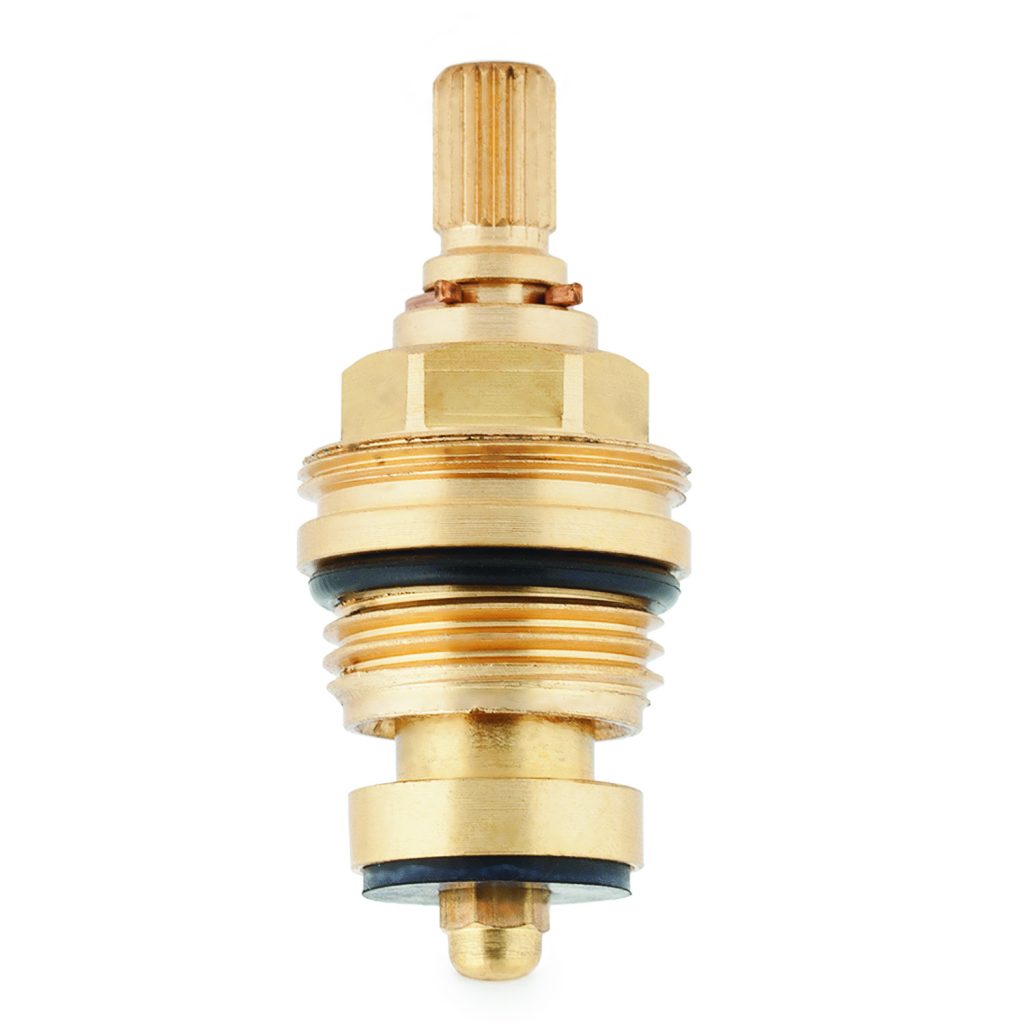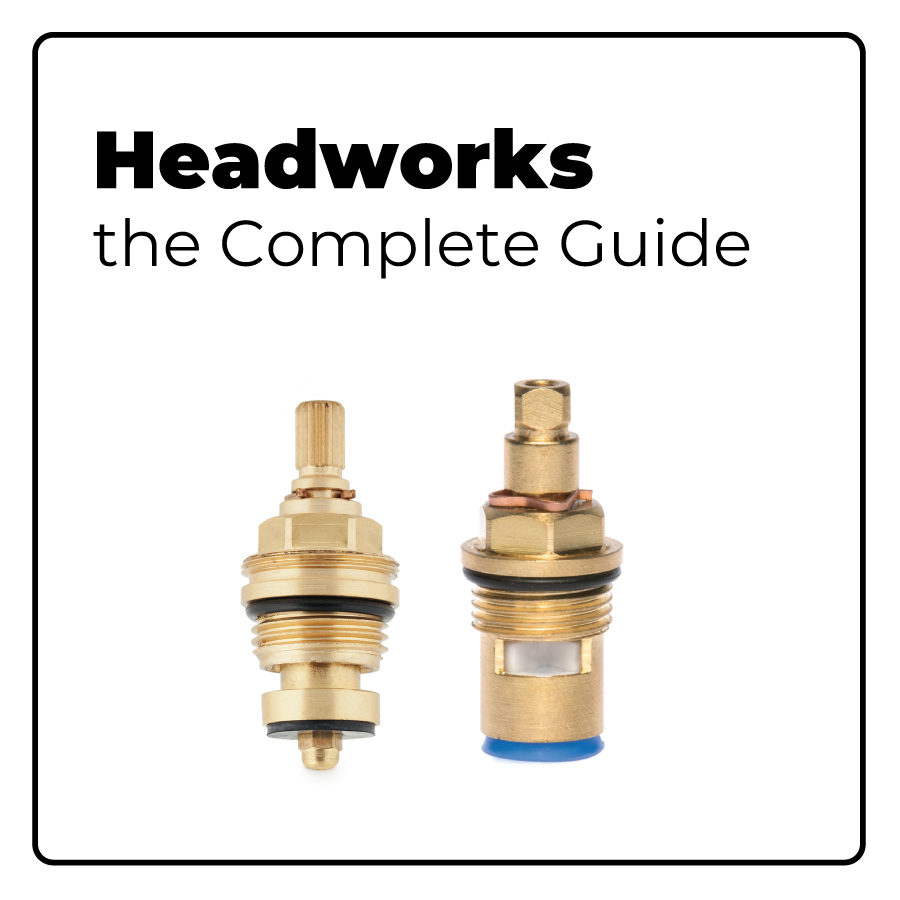Sometimes, headworks can go unnoticed in certain countries, but they are one of the primary water control valves for faucets in places like North America and India. Headworks are suitable for most applications, such as kitchen and bathroom faucets and showers. However, understanding their functionalities and how to choose the right one will help our customers make better decisions.
What is a headwork, and what types of faucets can you achieve with each?
A headwork is a traditional two-handle faucet component that controls water flow (and temperature if you count with a two headwork system). To adjust the temperature in a faucet using headworks, you need two separate headworks—one for hot water and one for cold. By turning each independently, users can control the amount of hot and cold water that mixes, achieving the desired temperature.
Unlike single-lever cartridges, which allow control of both temperature and flow with one handle, headworks offer a more precise and traditional method for water regulation. They are especially valued in markets that prioritize durability, simplicity, and easy maintenance.
Headworks typically rely on ceramic discs to control water flow. These systems feature two discs that rotate when the faucet handle is turned. As the discs rotate, their aligned openings allow water to pass through, while misalignment blocks the flow, creating a tight, drip-free seal. This robust ceramic design ensures long-lasting, reliable operation—ideal for faucets that require durability and consistent performance.
We offer two types of headworks: Ceramic Headwork (which we call MC) and Conventional Headwork (which we call MN). The main difference between them is that Ceramic Headworks rotate either 180º or 90º, while Conventional Headworks offer standard extended circular movement.

Ceramic Headwork: These headworks are now more common and easier to find. Their main rotations are 180º and 90º, but we can custom-make them to adjust the opening angle as desired. They consist of two ceramic pieces: the lower ceramic piece is fixed, while the upper ceramic moves to open and close the gate for water flow. Sedal offers a wide range of Ceramic Headworks, with different sizes, materials, and features.

Conventional Headwork: This type of headwork was the first to be designed and features a longer rotation arc. Instead of a two-ceramic system, it uses a rubber piece that moves upward as the lever is turned, allowing more flow as it opens. We have two specific models of this type of headwork, the standard version and one with a longer shaft, but we can also custom-make them to meet our clients’ needs.
Each headwork comes with different thread sizes, such as 3/8″, 3/4″, or 1/2″, among others. Make sure to choose the one that best fits your new faucet!
It is important to mention that at Sedal, we work with the best materials and engineers, ensuring double life-cycles compared to most headworks, with a strong 1,000,000 life cycles in ASME A112 certification.
Headwork Materials
Headworks can be made from a wide range of materials, but the most common are brass and plastic.
Although both materials perform well in standard settings, there are key differences. Brass, for instance, is stronger and has a higher torque-breaking point, but it may contain up to 2% lead in its composition. Plastic, on the other hand, has a slightly lower torque-breaking point but is lead-free. In addition to these options, stainless steel, chrome finishes, or a mix of materials can also be considered.
It’s important to note that legal requirements for materials are becoming increasingly strict regarding dangerous substances. Ensuring that the products you choose are made from materials that meet your local regulations is essential.
At Sedal, we hold certifications such as WRAS, KTW, ACS, NSF, and NF, ensuring that we can help you select the products best suited to your market and design.
Even though all these specifications, we can provide our clients with a full custom-made headwork that can fit their project and design not only in size but in every feature possible, such as material, shaft length, flow rate or rotation angle among others.
Any thoughts? Don’t hesitate to contact us, and our sales team will be happy to assist you with any questions you may have.
